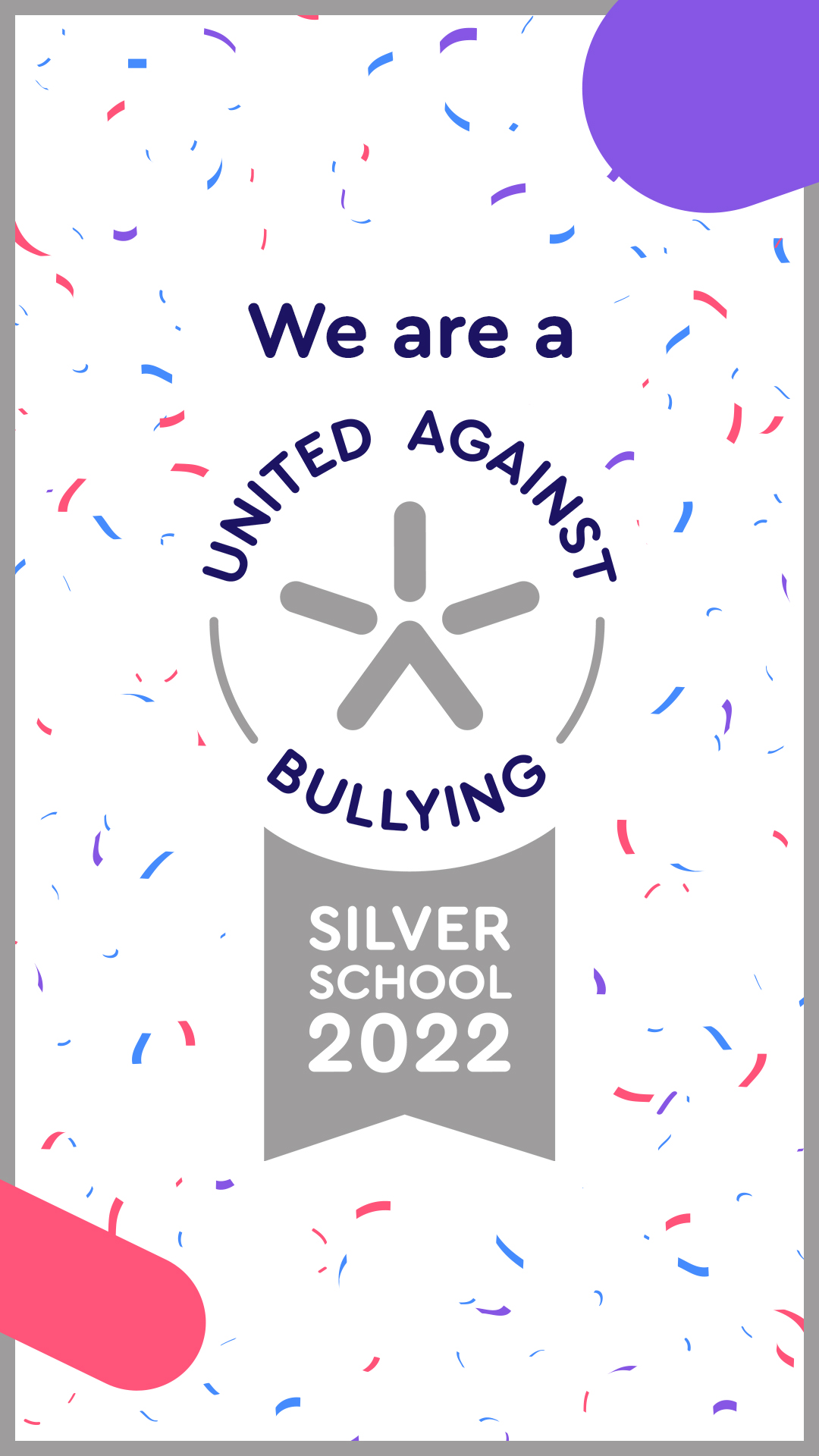We’re proud to have achieved United Against Bullying Silver School status

Please meet our new anti-bullying ambassadors. Once again, they will be working closely with Mrs Roche on the new Anti-Bullying Alliance initiative: United Against Bullying.
Year 2: Lillian and Xander
Year 3: Elsie and Alexander
Year 4: Abril and Tommy
Year 5: Edith and Oliver
Year 6: Damia and Conor
Our Anti-Bullying Ambassadors are instrumental in our drive to ensure a happy and conducive learning environment for all the children in our school. They meet regularly to support each other and to discuss ways to improve challenging relationships and lead events such as Anti-Bullying Week.
Anti-Bullying Week
This week the Anti-Bullying Ambassadors held a whole school assembly focused on the Anti-Bullying Alliance theme ‘Reach Out’. If you would like to learn more, please click on the link below and watch the video clip.

Anti-Bullying Pupil Survey
As part of our United Against Bullying initiative, Years 3-6 have completed an online Anti-Bullying Alliance Pupil Survey. The results were discussed with the Ambassadors and taken back to class to share with their peers.
What is Bullying?
Bullying is unwanted, aggressive behaviour among school aged children that involves a real or perceived power imbalance. The behaviour is repeated, or has the potential to be repeated, over time. Both children who are bullied and who bully others may have serious, lasting problems.
In order to be considered bullying, the behaviour must be aggressive and include:
- An Imbalance of Power: Children who bully use their power—such as physical strength, access to embarrassing information, or popularity—to control or harm others. Power imbalances can change over time and in different situations, even if they involve the same people.
- Repetition: Bullying behaviours happen more than once or have the potential to happen more than once.
Bullying includes actions such as making threats, spreading rumours, attacking someone physically or verbally, and excluding someone from a group on purpose.
- Verbal bullying is saying or writing mean things. Verbal bullying includes:
- teasing;
- name-calling;
- inappropriate sexual comments;
- taunting;
- threatening to cause harm.
- Social bullying, sometimes referred to as relational bullying, involves hurting someone’s reputation or relationships. Social bullying includes:
- leaving someone out on purpose;
- telling other children not to be friends with someone;
- spreading rumours about someone; o embarrassing someone in public.
- Physical bullying involves hurting a person’s body or possessions. Physical bullying includes:
- hitting/kicking/pinching; o spitting;
- tripping/pushing;
- taking or breaking someone’s things;
- making mean or rude hand gestures.
- Cyber bullying is bullying that takes place over digital devices like cell phones, computers, and tablets. Cyberbullying can occur through SMS, Text, and apps, or online in social media, forums, or gaming where people can view, participate in, or share content. Cyberbullying includes sending, posting, or sharing negative, harmful, false, or mean content about someone else. It can include sharing personal or private information about someone else causing embarrassment or humiliation. Some cyberbullying crosses the line into unlawful or criminal behaviour.The most common places where cyberbullying occurs are:
- Social Media, such as Facebook, Instagram, Snapchat, and Twitter;
- SMS (Short Message Service) also known as Text Message sent through devices;
- Instant Message (via devices, email provider services, apps, and social media messaging features);
- email.
